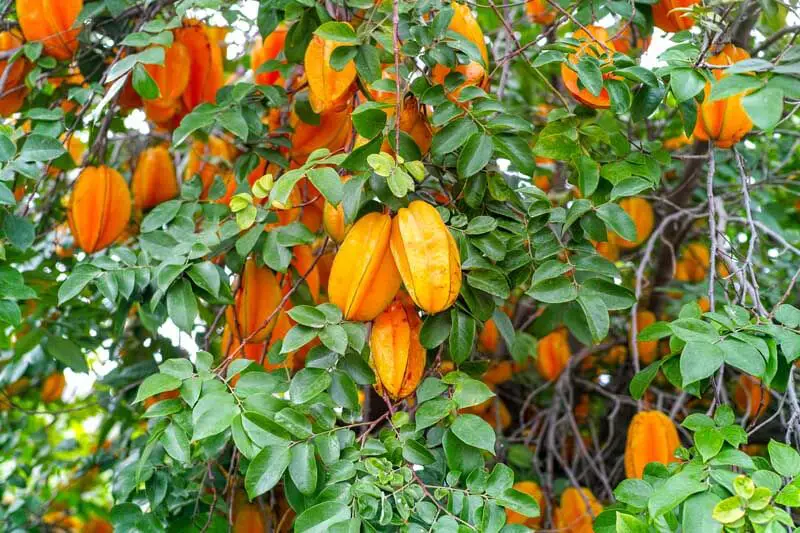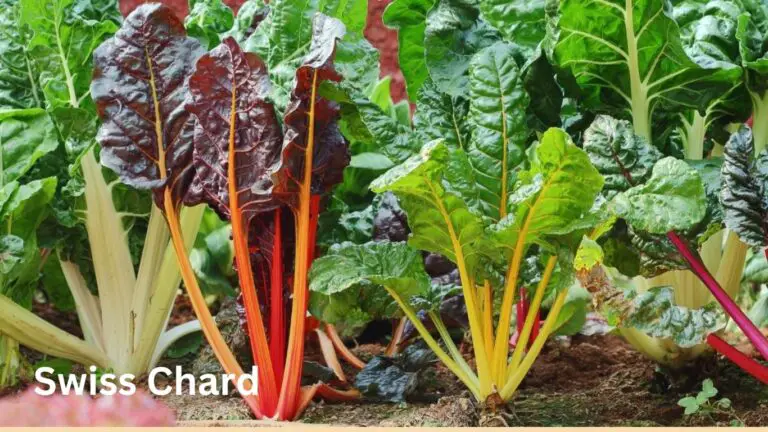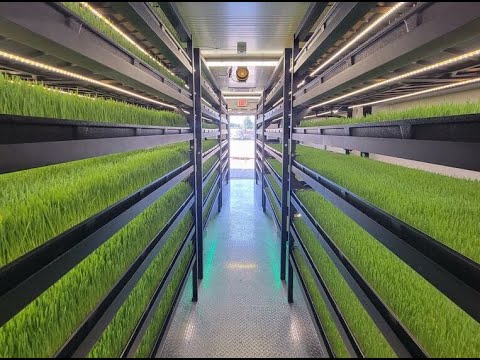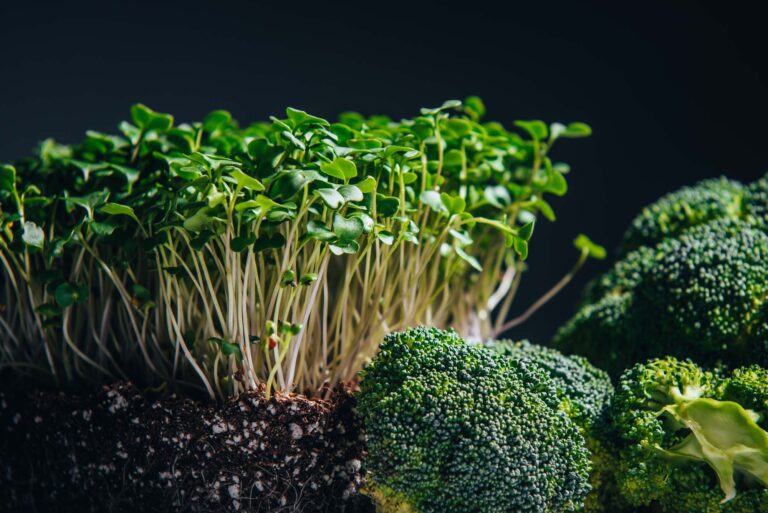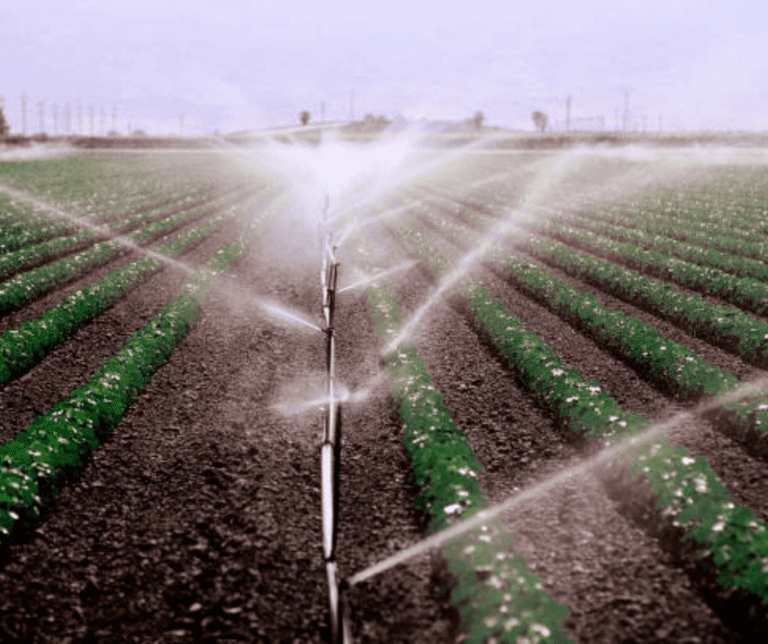Star Fruit Cultivation: Exotic Flavors from the Tropics
Benefits of Growing Star Fruit
Star fruit, also known as carambola, offers a multitude of benefits for both gardeners and consumers alike. One of the primary advantages of growing star fruit is its high yield potential. These fruit trees can produce abundant harvests of star-shaped fruits, providing a plentiful supply for personal consumption or commercial sale. Additionally, star fruit is a resilient crop that requires minimal maintenance once established, making it a relatively low-maintenance addition to any orchard or garden.
Furthermore, star fruit is renowned for its high nutritional value, containing essential vitamins and minerals such as vitamin C, fiber, and antioxidants. Consuming star fruit can promote overall health and well-being, supporting the immune system and aiding in digestion. With its unique flavor profile that combines sweet and tart notes, star fruit also offers a delightful culinary experience for those seeking exotic and flavorful fruits to incorporate into their diet.
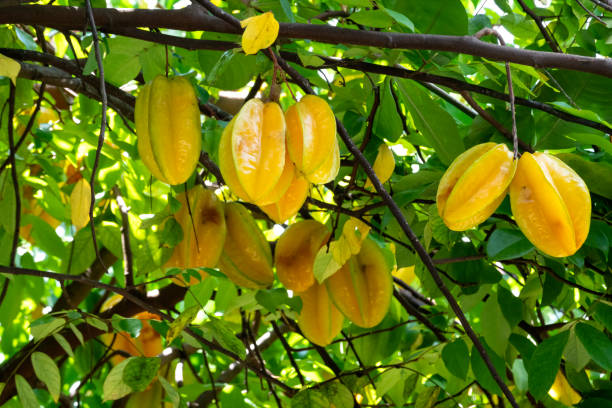
Ideal Climate for Star Fruit Cultivation
Star fruit trees thrive in tropical and subtropical climates, preferring temperatures that do not drop below 25°F (-4°C) for prolonged periods. An ideal climate for star fruit cultivation is one characterized by warm temperatures, abundant sunlight, and high humidity levels. These conditions are crucial for the healthy growth and fruit production of star fruit trees.
In addition to temperature and sunlight requirements, star fruit trees also require well-drained soil and protection from strong winds. The ideal climate for star fruit cultivation is one that offers a consistent growing season without extreme temperature fluctuations. In regions with mild winters and hot, humid summers, star fruit trees can flourish and produce high-quality fruits that are both flavorful and nutritious.
Soil Requirements for Growing Star Fruit
Star fruit trees thrive in well-drained, slightly acidic soils with a pH level ranging from 5.5 to 6.5. Sandy loam or loamy soils are ideal for star fruit cultivation, as they promote good root development and allow for proper water drainage. Additionally, the soil should be rich in organic matter to provide essential nutrients for the growth and fruiting of star fruit trees.
It is important to avoid waterlogged or clayey soils, as they can lead to root rot and hinder the growth of star fruit trees. Regular soil testing is recommended to monitor nutrient levels and pH, enabling growers to make necessary adjustments through fertilization or soil amendments. Overall, ensuring proper soil conditions is crucial for establishing a healthy and productive star fruit orchard.
Propagation Methods for Star Fruit Trees
Star fruit trees can be propagated through both seeds and vegetative methods. While growing star fruit from seeds is possible, it is not recommended for commercial production as it can result in variations in fruit quality and yield. Vegetative propagation methods, such as air-layering and grafting, are preferred for maintaining the desired characteristics of the parent plant. Air-layering involves inducing roots to grow on a branch while still attached to the parent tree, creating a new plant. Grafting, on the other hand, involves joining a shoot or bud from a selected star fruit tree onto a rootstock, ensuring the new plant inherits the desired traits.
The choice of propagation method for star fruit trees depends on various factors such as the availability of planting materials, desired fruit quality, and the expertise of the grower. Both air-layering and grafting can be effective ways to propagate star fruit trees, allowing growers to replicate superior cultivars and ensure consistent fruit production. By selecting the most suitable propagation method based on specific requirements and conditions, growers can establish successful star fruit orchards that meet market demands and maximize productivity.
Pruning and Training Star Fruit Trees
Pruning and training are vital practices in nurturing healthy and productive star fruit trees. Regular pruning helps maintain the tree’s shape, improves air circulation, and sunlight penetration, ultimately enhancing fruit quality and yield. It is recommended to prune away any dead, diseased, or damaged branches to prevent the spread of infections and promote new growth.
Training the star fruit tree involves guiding its growth pattern to optimize fruit production and ease of maintenance. By selectively removing branches that hinder desirable growth and creating a well-balanced canopy, growers can ensure even fruit ripening and facilitate harvesting. Proper training techniques also aid in managing the tree’s size, promoting structural integrity, and maximizing overall orchard efficiency.
Pest and Disease Management in Star Fruit Orchards
Star fruit orchards are susceptible to a variety of pests and diseases that can impact the health and yield of the trees. Common pests that affect star fruit trees include fruit flies, aphids, and mealybugs, which can damage the fruit and foliage. To manage these pests, regular monitoring of orchards is essential to detect early signs of infestation. Integrated pest management practices, including cultural controls, biological controls, and, when necessary, targeted pesticide applications, can help mitigate pest populations effectively while minimizing the impact on beneficial organisms and the environment.
In addition to pests, star fruit trees are prone to diseases such as anthracnose, root rot, and powdery mildew, which can reduce fruit quality and overall tree vigor. Proper orchard sanitation, including the removal of diseased plant material and debris, can help prevent the spread of pathogens. Fungicide applications may be necessary to control fungal diseases, especially during periods of high humidity and rainfall. Adopting good cultural practices, such as adequate spacing between trees for air circulation and proper irrigation management, can also help reduce the prevalence of diseases in star fruit orchards.
The table below is given below to shows the pests and diseases and their solution:
| Pest/Disease | Solution Description |
|---|---|
| Fruit Flies | Install fruit fly traps strategically throughout the orchard to capture adult flies and reduce their population. Use insecticides specifically approved for star fruit orchards, following recommended dosages and safety precautions. Maintain good orchard sanitation by regularly removing fallen fruits to eliminate breeding sites for fruit flies. Harvest star fruits promptly when ripe to minimize attractiveness to fruit flies and reduce the risk of infestation. |
| Anthracnose | Apply fungicides during critical stages such as flowering and fruiting to protect against anthracnose infection. Prune trees to enhance air circulation within the canopy, reducing humidity and inhibiting fungal growth. Regularly remove and destroy infected fruits and plant debris to prevent the spread of anthracnose spores. Avoid overhead irrigation to minimize moisture on leaves, as wet conditions can promote anthracnose development. Rotate the use of fungicides with different modes of action to prevent the development of resistance in fungal populations. |
| Sooty Mold | Control populations of honeydew-producing insects such as aphids to reduce the sugary substance available for sooty mold growth. Prune overcrowded branches to improve airflow within the canopy, minimizing conditions favorable for sooty mold development. Apply horticultural oils to suffocate sooty mold spores and prevent their establishment on plant surfaces. Maintain a clean orchard environment by removing debris and minimizing conditions that favor insect infestations. Address ant infestations promptly to prevent them from protecting aphids and contributing to sooty mold persistence. |
| Fruit Rot | Promptly remove and discard any fruits showing signs of rot to prevent the spread of fungal pathogens. Apply fungicides preventively, especially during periods of high humidity or rainfall when fruit rot is most likely to occur. Enhance orchard drainage to prevent waterlogging and reduce excess moisture in the soil, minimizing conditions conducive to fruit rot development. Apply mulch around trees to prevent soil splashing onto fruits, reducing the risk of fungal infection. Avoid overcrowding and excessive fertilization, as these practices can create conditions conducive to fungal diseases like fruit rot. |
| Leaf Spot | Apply fungicides at the first sign of leaf spot infection to prevent its spread to healthy leaves. Regularly remove and destroy leaves showing symptoms of leaf spot to reduce inoculum levels within the orchard. Prune and thin branches to improve air circulation within the canopy, creating an environment less favorable for fungal growth. Avoid overhead irrigation to minimize leaf wetness, as prolonged moisture on foliage can promote leaf spot development. Apply copper-based fungicides during dormant periods to suppress overwintering fungal populations and reduce disease pressure in the growing season. |
Harvesting and Storage of Star Fruit
When harvesting star fruit, it’s crucial to wait until the fruit reaches the desired maturity level. Star fruit is typically ready for harvest when it turns a bright yellow color and feels firm to the touch. It’s important to handle the fruit carefully during harvesting to prevent damage that may impact its quality and shelf life. Using sharp pruning shears to cut the fruit from the tree is recommended to ensure a clean cut without causing any unnecessary stress to the plant.
After harvesting, star fruit should be stored in a cool, dry place to maintain its freshness and extend its shelf life. Keeping the fruit at room temperature is suitable for short-term storage, but for longer preservation, refrigeration is advised. Properly stored star fruit can last for up to two weeks in the refrigerator. It’s essential to avoid storing star fruit alongside fruits that release ethylene gas, such as bananas, as this can accelerate ripening and shorten the fruit’s shelf life.
Commercial Potential of Star Fruit Farming
Star fruit farming holds significant commercial potential due to the increasing global demand for this exotic fruit. With its unique shape, vibrant color, and sweet-tart flavor, star fruit has gained popularity in both local and international markets. Its versatility in culinary applications, such as salads, juices, and desserts, further enhances its market appeal.
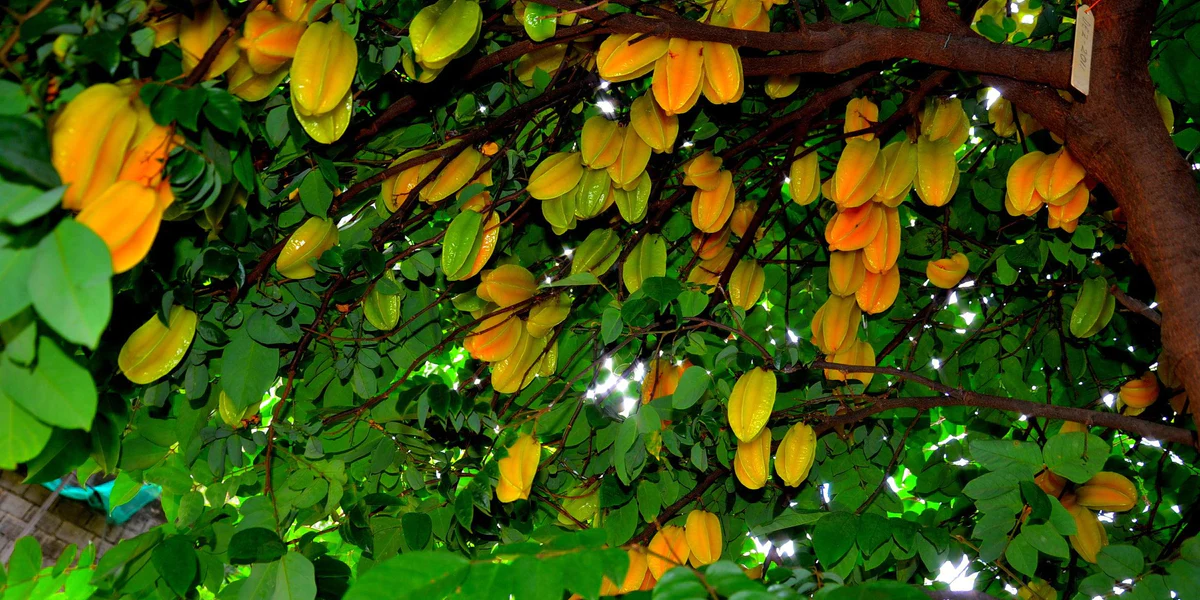
Moreover, star fruit is a rich source of vitamin C, fiber, and antioxidants, making it a desirable choice for health-conscious consumers. As consumer interest in exotic fruits and healthy eating continues to rise, the market for star fruit is expected to expand. Additionally, the ability of star fruit trees to thrive in tropical and subtropical climates allows for year-round production in suitable regions, further contributing to its commercial viability.
Value-Added Products from Star Fruit
Star fruit, also known as carambola, offers a versatile range of value-added products that cater to various consumer preferences. The fruit’s natural tangy-sweet flavor profile makes it an ideal candidate for processing into juices, jams, and preserves. Rich in antioxidants and vitamin C, these products not only offer a delightful taste but also provide health benefits to consumers. Additionally, the unique shape of star fruit slices makes them a visually appealing addition to fruit salads, desserts, and garnishes, enhancing the overall presentation and aesthetic appeal of dishes.
Another innovative value-added product derived from star fruit is dried fruit snacks. By dehydrating star fruit slices, manufacturers can create crispy and chewy snacks that are convenient for on-the-go consumption. Dried star fruit retains its distinct flavor and retains the fruit’s nutritional properties, making it a popular choice for health-conscious consumers seeking natural and flavorful snack options. With the rise of demand for healthy and exotic snacks, dried star fruit presents a promising market opportunity for food entrepreneurs looking to diversify their product offerings and cater to niche consumer preferences.
Nutritional Benefits of Star Fruit
Star fruit, also known as carambola, is not only a visually appealing exotic fruit but also packs a nutritional punch. Rich in antioxidants, vitamin C, fiber, and minerals like potassium, star fruit can be a valuable addition to your diet. With only around 28 calories per serving, it offers a guilt-free snacking option while providing essential nutrients.
In addition to its low calorie content, star fruit is a good source of dietary fiber, aiding digestion and promoting gut health. The fruit’s vitamin C content supports immune function and collagen production for healthy skin. Moreover, the presence of antioxidants like flavonoids and polyphenols in star fruit can help combat oxidative stress in the body, potentially reducing the risk of chronic diseases. This nutrient-dense fruit can contribute to a balanced and wholesome diet, offering both flavor and health benefits.
The benefits of star fruit is given below in a table:
| Benefits | Description |
|---|---|
| Rich Source of Vitamin C | Boosts immune system, aids in collagen production for skin health, and acts as an antioxidant. |
| Excellent Source of Dietary Fiber | Supports digestive health, promotes satiety, and helps control blood sugar levels. |
| Low in Calories and Fat | Suitable for weight management while providing essential nutrients. |
| Contains Antioxidants | Helps reduce oxidative stress, lowers the risk of chronic diseases like heart disease and cancer. |
| Provides Essential Minerals | Potassium for heart health, calcium and magnesium for bone health, and iron for energy levels. |
| Hydrating Properties | High water content helps maintain hydration and supports overall hydration status. |
| Promotes Digestive Regularity | Dietary fiber aids in regular bowel movements and prevents constipation. |
Culinary Uses of Star Fruit
Star fruit, also known as carambola, is a versatile fruit that can be used in various culinary applications. Its unique shape and tart flavor make it a popular choice for both sweet and savory dishes. When ripe, star fruit can be eaten fresh as a snack or used as a decorative garnish for salads, desserts, and cocktails. Its crisp texture and citrusy taste add a refreshing touch to fruit salads and smoothies, making it a favorite among health-conscious individuals looking for a nutritious boost.
Beyond its fresh consumption, star fruit can also be incorporated into cooked dishes to add a tangy twist. It can be used in chutneys, jams, sauces, and marinades to enhance the flavor profile of meats, seafood, and poultry. Star fruit can also be pickled or candied to create unique condiments or sweet treats. The fruit’s high pectin content makes it ideal for jelly-making, while its distinctive aroma and taste can elevate the flavor of baked goods like cakes, tarts, and muffins. Whether enjoyed raw or cooked, star fruit’s culinary versatility makes it a valuable ingredient in both home kitchens and professional culinary settings.
Traditional and Medicinal Uses of Star Fruit
Star fruit, scientifically known as Averrhoa carambola, has been utilized for its traditional and medicinal properties for centuries across various cultures. In traditional medicine, star fruit is often valued for its diuretic properties, believed to aid in kidney function and help alleviate conditions such as kidney stones and urinary tract infections. Additionally, the fruit is reputed to have antimicrobial and anti-inflammatory properties, which have been utilized in remedies targeting skin issues and digestive disturbances.
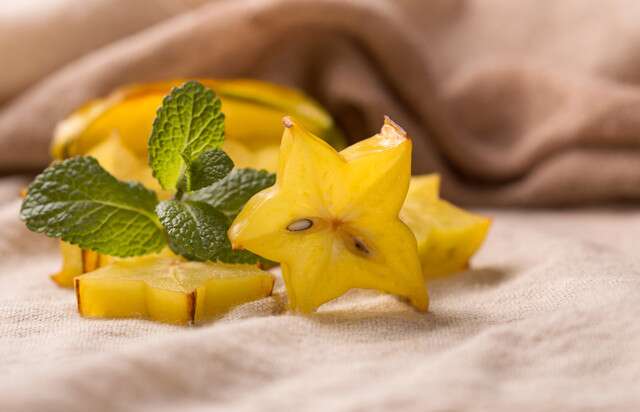
Moreover, in traditional Asian medicine, the consumption of star fruit is associated with purported health benefits such as lowering blood pressure and reducing cholesterol levels. The fruit is also considered a good source of Vitamin C, fiber, and antioxidants, supporting overall health and well-being. While scientific research on the medicinal properties of star fruit is limited, the fruit continues to hold a place in traditional medicine practices, with ongoing exploration into its potential health benefits and uses.
Global Demand for Star Fruit
Star fruit, also known as carambola, has been gaining popularity globally due to its unique appearance, refreshing flavor, and numerous health benefits. The increasing awareness about the nutritional value of star fruit, which is packed with vitamin C, fiber, and antioxidants, has contributed to a surge in its demand in various markets. Consumers are drawn to the tropical flair that star fruit adds to dishes, beverages, and desserts, making it a sought-after item in supermarkets, restaurants, and exotic fruit markets worldwide.
Moreover, the growing trend towards healthy eating and exotic fruit consumption has propelled the global demand for star fruit, as more people seek out diverse and nutrient-rich options for their diet. The eye-catching star-shaped slices of the fruit not only make it visually appealing for culinary presentations but also contribute to its rising popularity as a versatile ingredient in salads, smoothies, jams, and chutneys. As a result, countries with suitable climates for star fruit cultivation are expanding their production to meet the increasing international demand and capitalize on the market opportunities presented by this tropical gem.
Challenges in Star Fruit Cultivation
Star fruit cultivation faces several challenges that growers need to address in order to achieve successful yields. One of the primary challenges is susceptibility to frost and cold temperatures. Star fruit trees are sensitive to cold weather, which can damage the fruit and hinder overall plant growth. In regions with frost or prolonged cold spells, growers must implement protective measures such as frost cloth or greenhouse cultivation to maintain optimal growing conditions for star fruit trees.
Another significant challenge in star fruit cultivation is the risk of pests and diseases that can affect the health of the trees and reduce fruit quality. Common pests that attack star fruit trees include fruit flies, scale insects, and mites, which can cause damage to the fruit and foliage. In addition, diseases such as anthracnose and root rot can impact tree health and productivity. Growers need to stay vigilant in monitoring and implementing integrated pest management strategies to mitigate the risk of pest infestations and diseases in star fruit orchards.
Watch the video to learn more about the cultivation of star fruit.
Future Trends in Star Fruit Farming
The future of star fruit farming holds promising opportunities for growers looking to diversify their agricultural practices. With an increasing focus on sustainability and organic production methods, there is a growing demand for star fruit that is cultivated using environmentally friendly practices. As consumers become more conscious of the origins of their food, there is a rising interest in locally grown and pesticide-free produce, positioning star fruit as a favorable option in the market.
Moreover, technological advancements in agriculture, such as precision farming and automated systems, are expected to transform the way star fruit is cultivated. These innovations can enhance efficiency, reduce labor costs, and optimize resource utilization, ultimately leading to higher yields and better quality fruits. By harnessing the power of technology, star fruit farmers can stay competitive in the industry while meeting the evolving demands of consumers and the market.
What are some potential value-added products that can be made from star fruit?
Some potential value-added products from star fruit include star fruit juice, jams, jellies, and even dried star fruit slices.
How can star fruit be used in cooking?
Star fruit can be used in a variety of culinary dishes, including salads, salsas, chutneys, desserts, and even as a garnish for cocktails.
Are there any traditional or medicinal uses of star fruit?
In traditional medicine, star fruit has been used to treat ailments such as coughs, sore throats, and skin inflammation. However, it is important to consult with a healthcare professional before using star fruit for medicinal purposes.
What is the global demand for star fruit?
The global demand for star fruit has been steadily increasing due to its unique flavor, high nutritional value, and potential health benefits. Countries in Asia, the Americas, and Europe are among the top consumers of star fruit.
What are some of the challenges in star fruit cultivation?
Some challenges in star fruit cultivation include susceptibility to pests and diseases, specific soil and climate requirements, and the need for proper pruning and training techniques to ensure optimal fruit production.
What are some future trends in star fruit farming?
Future trends in star fruit farming may include the development of new star fruit varieties with improved flavor and disease resistance, increased use of sustainable farming practices, and the expansion of star fruit cultivation in new regions to meet growing demand.

